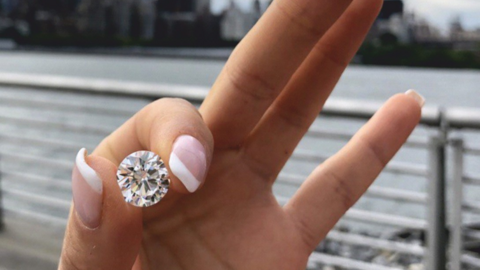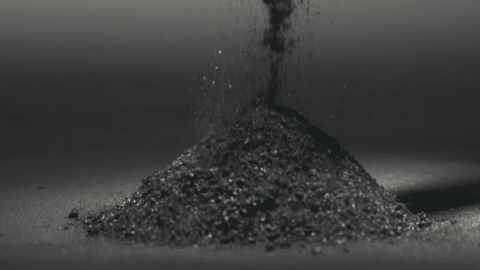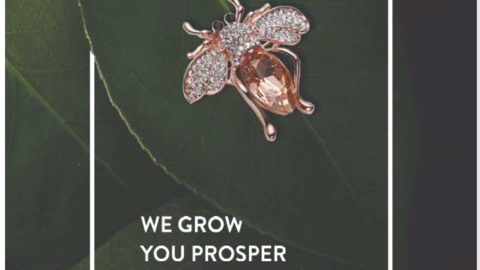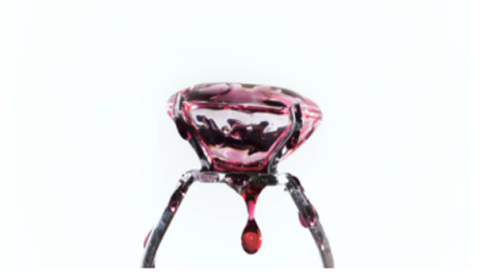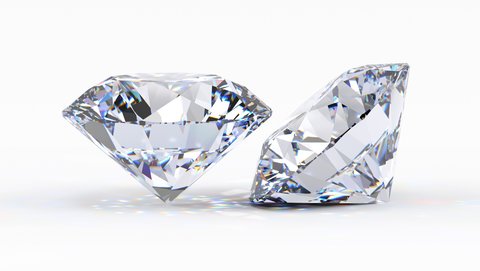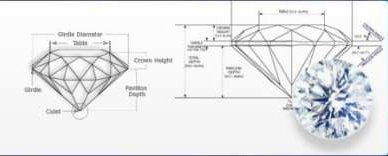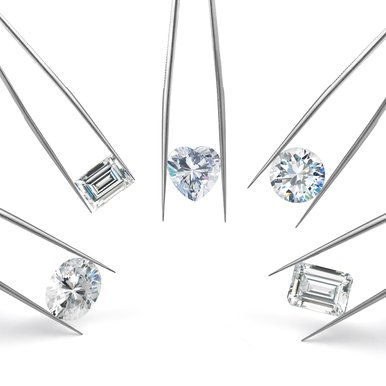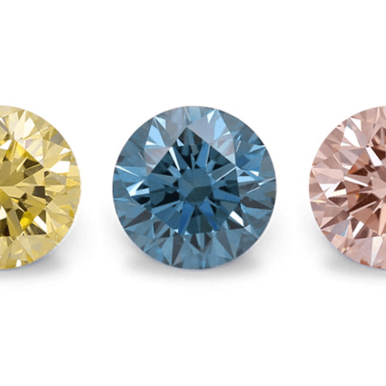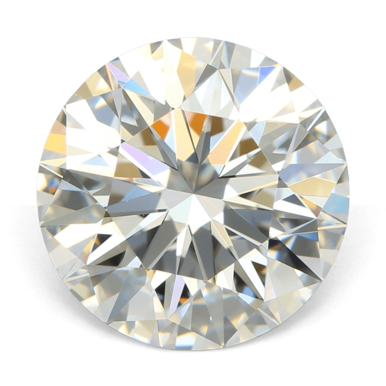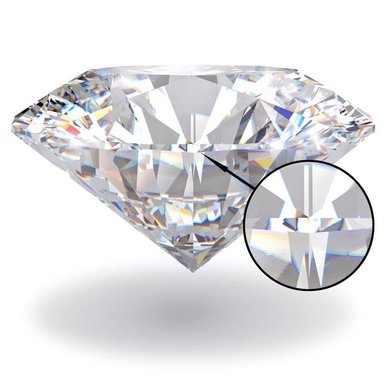
The Timeless Elegance of Briolette Cut Lab-Grown Diamonds
Briolette Cut Lab-Grown Diamonds
In the evolving world of fine jewelry, briolette cut lab-grown diamonds represent a perfect marriage of historical elegance and modern sustainability. These rare, teardrop-shaped gems have experienced a remarkable resurgence in 2025, captivating collectors and jewelry enthusiasts alike with their unique brilliance and vintage charm. Unlike conventional diamond cuts, the briolette offers a distinctive silhouette that stands out in any collection, making it an increasingly sought-after choice for those looking to combine ethical sourcing with extraordinary beauty. As lab-grown diamonds continue to revolutionize the jewelry market, the briolette cut provides a sophisticated option for discerning buyers seeking both uniqueness and environmental responsibility.

What is a Briolette Cut Diamond?
A briolette cut diamond is a distinct elongated pear or teardrop-shaped gemstone that features complete faceting around its entire surface. Unlike conventional diamond cuts, the briolette has no table, crown, or pavilion—instead, it presents a symmetrical, fully faceted form that captures and reflects light from every angle. This ancient cutting style typically includes 84-96 triangular facets that encircle the stone completely, creating extraordinary light dispersion and brilliance.
Lab-grown briolette diamonds maintain all the visual characteristics of their mined counterparts but offer superior ethical and environmental benefits. These lab-created gems differ dramatically from modern cuts like the round brilliant or princess cut, not only in appearance but in how they interact with light. While a round brilliant diamond is designed to return light directly to the viewer's eye, the briolette's multidirectional faceting creates a more dynamic, fluid brilliance that shifts with movement.
Briolette diamonds are particularly favored for pendants and earrings, where their movement and all-around sparkle can be fully appreciated. Their tapering shape and need for specialized settings make them less common in ring designs, though creative jewelers increasingly incorporate them as stunning side stones or unique centerpieces in contemporary engagement rings.
History and Origin of the Briolette Cut
The briolette cut boasts a rich heritage dating back to ancient India between the 12th and 17th centuries, where skilled diamond cutters first developed this sophisticated technique. These artisans recognized that the natural octahedral crystal structure of diamonds could be enhanced through strategic faceting to maximize light play while preserving carat weight. From India, briolette diamonds made their way to Europe, where they became highly prized possessions among royalty and aristocracy.
Historical records reveal notable figures like Eleanor of Aquitaine owned spectacular briolette diamond jewels in the 12th century. These exquisite gems later captivated French aristocracy, with Napoleon Bonaparte famously gifting a magnificent briolette diamond necklace to his empress. Renowned jewelry houses like Cartier incorporated briolettes into their most prestigious designs during the late 19th and early 20th centuries.
The briolette cut has experienced several revivals throughout history. It enjoyed particular popularity during the Victorian era, when pendants and earrings featuring these romantic shapes were fashionable among the elite. Later, Art Deco designers embraced briolettes for their ability to create movement and rhythm in geometric compositions. Today's lab-grown briolette diamonds continue this storied tradition while introducing modern innovations in ethical sourcing and sustainability.
Unique Features and Characteristics of Briolette Lab-Grown Diamonds
The briolette cut diamond showcases distinctive features that set it apart from conventional diamond cuts. Its most remarkable characteristic is the full 360-degree faceting that covers the entire stone, creating a continuous play of light regardless of viewing angle. This complete faceting—typically consisting of triangular facets arranged in symmetrical patterns—allows lab-grown briolette diamonds to achieve extraordinary scintillation and fire.
Unlike standard diamond cuts, briolettes lack a girdle (the thin perimeter that typically separates a diamond's crown from its pavilion). Instead, these gems feature a continuous contour that tapers to a point at one end. Most briolettes are drilled near the narrower end to accommodate jewelry settings, allowing them to move freely and maximize their dynamic light reflection properties.
When compared to conventional cuts, lab-grown briolette diamonds offer a different type of brilliance. While round brilliant diamonds are engineered to return maximum light through the table, briolettes create a more fluid, multi-dimensional sparkle. This distinction makes lab-grown briolettes particularly captivating in motion, as they produce cascading flashes of light and color with every movement.
Light Performance Comparison: Lab-Grown Briolette vs. Other Diamond Cuts
| Characteristic | Lab-Grown Briolette | Round Brilliant | Pear Cut |
|---|---|---|---|
| Facet Arrangement | 360° coverage (84-96 facets) | Table-focused (57-58 facets) | Asymmetrical (58-71 facets) |
| Light Return | Multi-directional | Primarily upward | Mainly upward with side flashes |
| Movement Effect | Significant sparkle changes | Stable brilliance | Moderate variation |
| Setting Requirements | Typically drilled or capped | Prong, bezel, or tension | Prong or bezel |
| Visual Size Perception | Appears larger for carat weight | Standard benchmark | Appears larger for carat weight |
Pros and Cons of Briolette Cut Diamonds
When considering a lab-grown briolette diamond, it's important to weigh both the advantages and potential drawbacks of this unique cut.
Pros:
- Complete Visibility: The briolette's 360-degree faceting offers unparalleled brilliance from every angle, making it exceptionally eye-catching.
- Antique Appeal: These diamonds possess a vintage charm that connects modern jewelry to centuries of aristocratic tradition.
- Movement and Light Play: When suspended in earrings or pendants, briolettes create captivating movement and dynamic light reflection.
- Unique Status: Far less common than conventional cuts, lab-grown briolettes make distinctive statement pieces.
- Sustainability: Lab-grown briolettes combine historical elegance with modern ethical sourcing, appealing to environmentally conscious buyers.
Cons:
- Premium Pricing: The complex cutting process for briolettes requires exceptional skill, making them more expensive than simpler cuts of similar carat weight.
- Vulnerability: The pointed tip and lack of girdle can make briolettes more susceptible to damage if not properly protected in settings.
- Setting Limitations: Their unique shape limits setting options and requires specialized design considerations.
- Visible Inclusions: The transparent nature of briolettes can make internal flaws more visible than in conventional cuts with strategic faceting.
Why Choose a Briolette Cut Diamond?
Selecting a lab-grown briolette diamond offers a compelling combination of historical elegance and modern ethics. These distinctive gems provide a refreshing alternative to conventional diamond cuts, making them perfect for those seeking jewelry that truly stands apart. The briolette's vintage charm evokes the glamour of aristocratic jewels while its fluid movement makes it particularly suited for special occasion pieces that demand attention.
For collectors, lab-grown briolette diamonds represent an opportunity to own a piece with genuine character and historical significance in an environmentally responsible form. The cut's rarity in the contemporary market ensures that your jewelry will be uniquely recognizable, unlike the ubiquitous round brilliants that dominate mainstream diamond offerings. Additionally, choosing a lab-grown briolette allows conscientious buyers to enjoy the magnificence of this historical cut while aligning with values of sustainability and ethical sourcing—truly the best of both worlds.
Buying Guide: What to Look For
When shopping for lab-grown briolette diamonds, understanding the evaluation criteria can help you make an informed purchase. While the traditional 4Cs (cut, color, clarity, and carat) still apply, they manifest differently in briolette diamonds compared to conventional cuts.
The 4Cs for Briolette Diamonds:
- Cut: In briolettes, symmetry is paramount. Look for uniform faceting and a balanced, evenly tapered shape. The proportions should be harmonious, typically with a length-to-width ratio between 2:1 and 3:1. Since there's no standardized cut grading for briolettes, rely on visual assessment and expert opinions.
- Clarity: Due to their transparent nature and multidirectional faceting, inclusions in briolettes are more visible than in other cuts. For this reason, aim for VS2 clarity or better in lab-grown briolettes, as lower clarity grades may impact the stone's beauty more noticeably than in conventional cuts.
- Color: Color preference is subjective, but colorless (D-F) or near-colorless (G-J) lab-grown briolettes typically command the highest prices. However, fancy colored lab-grown briolettes can be stunning options that showcase the cut's light dispersion capabilities beautifully.
- Carat: Briolettes may appear larger than their actual carat weight due to their elongated shape. Consider how the stone will be worn—larger briolettes create more dramatic movement in pendants and earrings.
Recommended Quality Specifications for Lab-Grown Briolette Diamonds
| Quality Factor | Premium Choice | Excellent Value | Good Value |
|---|---|---|---|
| Clarity | VVS1-VVS2 | VS1-VS2 | SI1 (eye-clean) |
| Color (Colorless) | D-F | G-H | I-J |
| Symmetry | Excellent | Very Good | Good |
| Length:Width Ratio | 2.5:1 | 2:1 or 3:1 | 1.5:1 or 3.5:1 |
| Faceting Quality | Precise & even | Mostly even | Slightly irregular |
| Drilling | Clean, centered | Well-executed | Visible but neat |
Additional Considerations:
- Certification: Ensure your lab-grown briolette comes with certification from a reputable gemological laboratory like IGI or GIA, which verifies its lab-grown origin and quality characteristics.
- Retailer Credentials: Purchase from established vendors specializing in lab-grown diamonds with transparent sourcing policies and positive customer reviews.
- Drilled Hole Assessment: Examine the drilled hole carefully—it should be clean, precisely centered, and appropriately sized for its setting without compromising structural integrity.

Famous Briolette Diamonds
Throughout history, several remarkable briolette diamonds have captured the imagination of collectors and enthusiasts worldwide. The legendary "Briolette of India," weighing approximately 90.38 carats, is perhaps the most renowned example. This historic diamond, believed to have been mined in Golconda, passed through the hands of Eleanor of Aquitaine and subsequently several European royal families before eventually being sold to an anonymous buyer in the early 20th century.
Napoleon Bonaparte famously commissioned a spectacular necklace featuring multiple briolette diamonds as a gift for Empress Marie Louise. This exquisite piece, showcasing the cutting technique's royal pedigree, is now housed in a prestigious European museum collection. In more recent times, auction houses like Christie's and Sotheby's have sold extraordinary colored briolette diamonds, including a 75.36-carat yellow briolette diamond necklace by Cartier that fetched over $6 million.
Today, lab-grown briolette diamonds offer the opportunity to create pieces inspired by these historic gems without the ethical concerns associated with antique diamonds of uncertain provenance.

Modern Uses and Trends
The briolette cut has experienced a significant resurgence in contemporary jewelry design, particularly with the advent of lab-grown diamonds. Today's designers are reimagining this historical cut for modern sensibilities, incorporating lab-grown briolettes into innovative pieces that highlight their distinctive movement and light-catching properties.
Current jewelry market trends show increasing demand for unique, conversation-starting designs, with lab-grown briolette diamonds fitting perfectly into this movement. High-profile celebrities have been spotted wearing briolette diamond earrings and pendants at red carpet events, further boosting their popularity. Fashion-forward designers are pairing briolettes with minimalist settings that allow the diamonds' natural motion and brilliance to take center stage.
Another emerging trend is the use of colored lab-grown briolette diamonds—blue, pink, and champagne varieties are particularly sought after for their ability to showcase the cut's spectacular light dispersion. Many contemporary consumers are also drawn to the sustainability narrative of lab-grown briolettes, appreciating how these gems honor historical traditions while embracing modern ethical values.
Where to Buy Briolette Cut Lab-Grown Diamonds
When searching for exceptional lab-grown briolette diamonds, Labrilliante stands as the premier destination for discerning buyers. Specializing in these rare and sophisticated cuts, Labrilliante offers an unparalleled selection of ethically created briolette diamonds that combine historical elegance with modern sustainability values.
What sets Labrilliante apart is their dedicated expertise in creating perfectly proportioned lab-grown briolette cuts with optimal facet arrangements for maximum brilliance. Each diamond comes with comprehensive certification documenting its lab-grown origin and exceptional quality characteristics. Their expert gemologists carefully assess every stone to ensure symmetrical faceting, ideal proportions, and proper drilling for secure setting.
Labrilliante's collection ranges from classic colorless briolettes to stunning fancy colored options, providing versatile choices for custom jewelry designs. Their experienced consultants can guide you through the selection process, helping you choose the perfect lab-grown briolette diamond to match your aesthetic preferences and ethical values.
Briolette Lab Grown Diamondss: Frequently Asked Questions
Yes, lab-grown briolette diamonds are chemically, physically, and optically identical to mined diamonds. They have the same carbon crystal structure and properties as earth-mined diamonds, but are created in controlled laboratory environments rather than formed naturally underground. The only difference is their origin, not their quality or composition.
Lab-grown briolette diamonds typically cost 80-90% less than their mined counterparts of equivalent quality. However, because of the specialized cutting technique required for briolettes, they generally command a premium over simpler cuts like round brilliants. This makes lab-grown briolettes an excellent value for collectors seeking this rare cut without the ethical concerns and higher price tag of mined diamonds.
Clean your briolette diamond jewelry by soaking it in a solution of mild dish soap and warm water for 20-30 minutes, then gently brushing with a soft toothbrush and rinsing thoroughly. Due to their unique shape and potential drilling, avoid ultrasonic cleaners which may damage settings. Store briolette pieces separately from other jewelry to prevent scratching, and have them professionally checked annually to ensure secure settings.
While traditionally used in pendants and earrings, briolette cut diamonds can be incorporated into unique engagement rings with proper protective settings. Creative jewelers often use briolettes as stunning side stones or in asymmetrical designs where the diamond is partially protected. For engagement rings, higher clarity grades (VS2 or better) are recommended as inclusions are more visible in briolettes.
Briolette diamonds typically appear larger than their actual carat weight would suggest. Their elongated shape and full faceting create an impression of greater size compared to traditional cuts like round brilliants of equivalent weight. This visual advantage makes them particularly attractive for statement pieces where maximum impact is desired.
Lab-grown briolette diamonds have a significantly lower environmental footprint than mined diamonds. They produce about 4.8 pounds of carbon emissions per carat versus 57 pounds for mined stones. By choosing lab-grown briolettes, consumers reduce energy consumption, water usage, and land disruption associated with traditional diamond mining.
No, lab-grown briolette diamonds cannot be distinguished from natural briolette diamonds by the naked eye. Even professional gemologists require specialized equipment to identify their origin. Both have identical optical properties and brilliance. All lab-grown diamonds from reputable sources like Labrilliante come with certification clearly stating their laboratory origin.
Briolette diamonds are experiencing a renaissance due to growing appreciation for unique, historical designs combined with modern sustainability values. Their distinctive movement and all-around brilliance align perfectly with contemporary preferences for statement jewelry with personal meaning. Additionally, innovations in lab-grown diamond technology have made this once-rare cut more accessible to discerning consumers seeking both ethical sourcing and extraordinary beauty.


